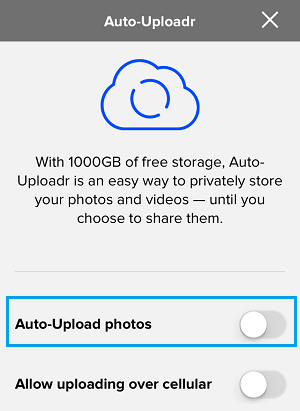


For example when we display a photo we don’t indicate whether it’s already a fave because we’d need to make this call multiple times. We’d like to be responsible consumers of the API so we set some restrictions for ourselves, such as never making a separate API call for each person in the room. The major challenges we face are due to the unique real-time group nature of our application. So far we’ve found that almost everything we’ve wanted to do has been possible. The nicest thing about it is the completeness. What if you favorite part of working with the Flickr APIs? Keying off of the conversation like this works really nicely for discovering areas of Flickrspace that you might not discover otherwise, and the results you get from clicking on a random phrase are often very funny and unexpected.ģ. We use this to determine interesting words and phrases in chat messages and we turn these into Flickr search links. Another makes use of the Yahoo Term Extraction API. We let you specify custom “photo emotes” – for example if you type /smile as a chat message we’ll show a photo you’ve tagged as phlow:emote=smile. One of my favorite features makes use of machine tags. And of course tagging, commenting and faving all go through the API. We take advantage of almost all of the API methods for browsing or searching for photos. We use the contacts and groups API’s to give control over privacy. We currently have two types of rooms – “personal rooms” tied to a user and rooms based on Flickr groups. Your identity on Photophlow is your Flickr identity, so of course we take advantage of authentication. How are you integrating with Flickr? What services or API methods do you use? (editor note: Also checkout the photophlow group!)Ģ. If you’d like to a quick tour of Photophlow I’d recommend this screencast. We also integrate with the major IM networks to notify you instantly when things happen in Photophlow, like someone commenting on one of your photos. For example you can send out a Twitter message with a link to your Photophlow room to invite your followers to a real-time conversation over photos. We also integrate with some other services like Twitter and Tumblr. Photophlow is meant to be used for all types of interactions around photos – organized activities such as group critiques and tutorials, as well as just plain hanging out and sharing. You can comment on photos, fave them, tag them and more, and all of this is shared with the group in real-time. As you search and share photos the group you’re browsing with sees the same things you are instantly. Photophlow is a web application for real-time group Flickr browsing. Can you say a bit about what Photophlow is for people who don’t know? I knew when we started talking about Code.Flickr I wanted to have interviews with third party developers, and I knew that I wanted my first interview to be with Neil Berkman, one of the engineers behind the amazing Photophlowġ. Posted in Uncategorized | Tagged api, fireeagle, geotags, gps, places, tools, twitter FireDopplGängEaglr Read the rest of “Twitter API updates, FireEagle and new Flickr API fun” for more on Twitter’s location API, FireEagle, and Flickr’s not-a-geocoder.
UNINSTALL FLICKR UPLOADR UPDATE
It’d be great if you didn’t have to update twitter yourself and there was something else out there that could do it for us. There’s no direct reason for twitter to have location stuff, (well no more than Flickr I guess) but everyone knows that everyone wants it. … which is nice as it’s just thrown in there as a ‘what if’ type of thing. There so developers can start playing with how geolocation might fit Nothing fancy, no geocoding or normalization. – sets the location for theĪuthenticated user to the string passed in a “location” parameter. Last night twitter released their next batch of API improvements, of course the one that caught my eye was …


 0 kommentar(er)
0 kommentar(er)
